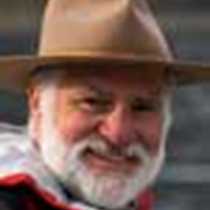There can be no doubting the tinge of sadness that was evident today for all aboard National Geographic Explorer, as the realization that this is to be the last day of our Svalbard adventure. But that feeling would in no way hinder the overwhelming sense of gratitude, for the many rich experiences that we have shared together, during these brief days together in this wondrous part of the planet.
The early risers were treated to camaraderie and cookies on the bridge, as has been the case every one of the days. The open bridge policy on Lindblad ships is a precious heritage, always warm, a good vantage point from which to see and of course a place to live many a story with abundant laughs.
Very early we sailed into Kongsforden and from there into Krossfjorden. We were surrounded by indescribable beauty in all its starkness, which is so typical of the polar regions. Under gray skies we appreciate the dark mountains with, at this time of the year, a covering of snow and ice tumbling down the steep sides. At the head of the fjord an impressive glacier with very visible lateral moraines can be appreciated. The waters are glassy still and many birds are sighted as they purposely fly to and from their colonies on foraging trips.
What stands out today is the green on the lower slopes, this is a much lusher landscape than the ones we have travelled through these last few days. Just before breakfast we have arrived at our destination, Signehamna, almost at the end of Krossfjorden. As we tuck into our breakfast our expedition leader announces the plans for the day. A variety of activities are on offer and this means struggling with decisions. There are various walks, Zodiac cruises, and kayaking; thankfully we can choose more than one, which will give us a better feeling for this place. The most popular choice is a medium walk and kayaking.
Soon enough we set out. The walks are over abundant vegetation made up of mosses, a wide variety of lichens, and more flowering plants than we have seen before. Many of the flowering plants have not flowered yet. The rocks are jagged and the little protected bay where we land is filled with small pieces of ice, which come from the huge glacier some distance from where the ship is anchored. The steep mountain slopes glow in a rich palette of greens, these give way to almost vertical cliffs that are home to hundreds of nesting birds, mostly guillemots, little auks, kittiwakes, and some puffins. Once ashore we spot some reindeer in the distance as well as a lone and very rotund ringed seal hauled out on a piece of ice. Arctic terns patrol the shore, the occasional pink-footed geese fly overhead, and snow buntings can be heard at regular intervals.
The kayakers enjoy the stillness and silence of this day and can be seen dotted about in the waters of the fjord.
A small group head off on a longer walk and reach the remains of an old weather station, which was occupied and used by the Germans during the Second World War.
We all return to the ship and there we face a difficult decision, for there is a polar plunge on offer. What does one do when faced with the dilemma in choosing between a unique chance to plunge into the frigid waters of the Arctic or be more sensible and just be an onlooker? A few hardy souls go for the very rapid experience and then enjoy a very welcome blueberry soup and a little something to spice it up, as well as some lively chit chat with our fellow swimmers!
After lunch we head out into open waters, the Sjubre-banken, in the hope of sighting some whales.
During the afternoon and either side of tea there is an opportunity to hear two presentations. The first from our National Geographic photographer Todd Gipstein on the subject of: “The Mind, the Eye and the Heart of the Photographer,” and a then “Global Sustainability–Climate Change and our Common Future,” from our Global Perspectives guest speaker, Gro Bruntland.
Our keen-eyed spotters on the bridge catch sight of whales at about teatime, and we all head out on deck to catch glimpses of the two largest animals that ever lived on the planet: blue whales and fin whales. The blue whale proves to be quite elusive; but thankfully we are able to get lots of good views of fin whales.
During the Captain’s Farewell Cocktail we have the opportunity to watch the guest slideshow and recall some of the memorable moments with the shared images and the expedition leader and Captain’s talks.
We have had a marvelous trip and even though there is an understandable sadness about, there is also a deep awareness of how fortunate we have all been to be able to see these remarkable parts of the planet. All we can say is thank you and maybe in appreciation we can double our efforts to share the urgent message to ensure the sustainability of these pristine places.









